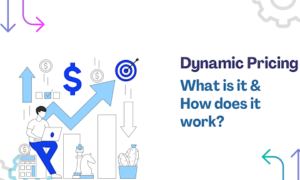New business owners face challenges with financial management due to a lack of capital, cash flow issues, difficulty obtaining investments, and a lack of experience in financial planning. In fact, over 20% of small businesses fail within the first year of launch. This makes it challenging for the new businesses to cover the day-to-day expenses, such as inventory purchases, marketing efforts, and payroll.
Without sufficient funds, businesses can quickly find themselves unable to meet obligations, causing operational disruptions and stalling growth. To tackle these financial challenges, many new business owners turn to flexible credit options like Net 30 accounts. This type of vendor credit account allows the business to buy products or services now and pay the full invoice within 30 days. A Net 30 account gives business owners valuable time to manage their cash flow, allowing them to use the funds in purchases for other critical expenses such as inventory restocking, marketing, or payroll before payment is due.
|
NOTE: The term “Net 30” refers to the payment terms— specifically, the payment is due in full 30 days after the invoice date, with no interest if paid on time. |
Let’s learn more about how NET 30 works.
How Does NET 30 Work in Practice?
Before searching for Net 30 vendors, new business owners should first understand how the process works:
Step 1: Apply for a Net 30 Account
In the first step, you need to apply for a Net 30 account with a vendor. You will need to submit business information, such as:
- EIN (Employer Identification Number).
- Contact details.
- Trade or bank references (in some cases).
Many vendors are startup-friendly. They may not need a long credit history to approve your application.
Step 2: Purchase Products or Services
Once your application is approved, you can then place orders with the vendor without paying upfront.
This might include purchasing:
- Office supplies
- Tech accessories
- Branding materials and other essential items your business needs.
Step 3: Receive an Invoice with Net 30 Terms
After processing your order, the vendor will send you an invoice with “Net 30” payment terms.
This simply means:
- You are expected to pay the full amount within 30 days of the invoice date (not the delivery date).
- Paying on time means no interest or late fees.
Ensure to keep track of your invoices and due dates to avoid any penalties.
Step 4: Use the 30-Day Window Strategically
That 30-day window can be a lifeline for businesses short on upfront capital.
You can use the 30-day period to:
- Generate revenue.
- Invest in marketing.
- Fulfill customer orders.
- Address other operational priorities.
Effectively managing this window helps keep your business stable and agile.
Step 5: Pay on Time to Build Credibility
Timely or early payments are important. They show vendors that you are reliable and can be trusted with credit. Also, if your vendor reports payments to business credit bureaus like Dun & Bradstreet, paying on time will help build your business credit score.
Step 6: Earn Better Terms Over Time
When you use Net 30 accounts consistently, you can have:
- Higher credit limits.
- Extended terms.
- Early payment discounts.
You will also strengthen vendor relationships, which becomes an invaluable asset as your business grows.
Conclusion
Net 30 accounts are not just a payment option, but a smart strategy for managing your business’s financial health.
These accounts are beneficial for startups and small businesses struggling with cash flow. They offer the flexibility to operate, grow, and build credit without relying on loans or personal debt. They allow you to meet immediate needs today while building a stronger vendor relationship and a long-term creditworthiness tomorrow.
Final Tip: Start by applying for 1-2 Net 30 accounts with vendors that report to credit bureaus. Use them wisely, pay on time (or early), and monitor your credit profile regularly.



































